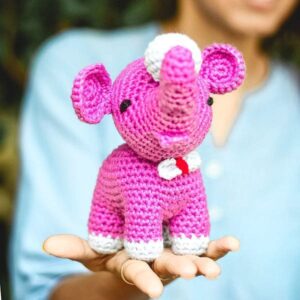In today’s fast-paced world, children are often bombarded with stimuli and distractions that can lead to stress, anxiety, and overwhelm. Teaching kids mindfulness techniques at a young age can help them develop self-awareness, emotional regulation, and resilience in the face of challenges. By incorporating simple and engaging mindful exercises into their daily routine, parents and educators can empower children to cultivate inner peace, focus, and well-being. In this article, we’ll explore a variety of mindful exercises designed specifically for kids to promote calmness, concentration, and overall mental health.
Mindful Breathing:
Mindful breathing is a foundational practice that helps children center their attention and connect with their breath, which serves as an anchor for present-moment awareness. Encourage kids to find a comfortable sitting or lying position and close their eyes if they feel comfortable. Invite them to take slow, deep breaths in through their nose, allowing their belly to rise with each inhale, and exhale slowly through their mouth, feeling the sensation of the breath leaving their body. Encourage them to notice the rise and fall of their chest and abdomen with each breath, bringing their attention back to the present moment whenever their mind wanders.
Body Scan:
The body scan is a gentle mindfulness practice that helps children develop body awareness and release tension from head to toe. Guide kids to lie down on their back with their arms by their sides and their eyes closed. Starting from their toes, invite them to focus their attention on each part of their body, one at a time, noticing any sensations they may experience without judgment. Encourage them to relax and soften each body part as they move their awareness upward, from their feet to their legs, hips, abdomen, chest, arms, hands, neck, and head. This practice helps children tune into their bodies and release physical and mental tension.
Sensory Exploration:
Engaging the senses is a playful way to introduce mindfulness to children and help them connect with the present moment. Set up a sensory exploration station with various objects such as textured fabrics, scented candles or oils, musical instruments, and natural materials like stones or shells. Encourage kids to explore each item mindfully, using their senses to observe the colors, textures, smells, sounds, and tastes. Encourage them to describe their observations without judgment and notice how each sensory experience makes them feel.
Mindful Eating:
Mindful eating is a fun and interactive practice that encourages children to savor and appreciate their food while fostering gratitude and awareness of hunger and fullness cues. Choose a snack or meal with a variety of colors, textures, and flavors, and invite kids to engage all their senses as they eat. Encourage them to take small bites, chew slowly, and pay attention to the taste, texture, and aroma of each bite. Encourage them to express gratitude for the food and the people who helped bring it to their plate. This practice helps children develop a healthy relationship with food and promotes mindful eating habits.
Mindful Movement:
Mindful movement activities such as yoga, tai chi, or dance can help children release pent-up energy, improve body awareness, and cultivate focus and concentration. Lead kids through a series of simple yoga poses, such as Downward-Facing Dog, Tree Pose, and Child’s Pose, encouraging them to move mindfully and pay attention to the sensations in their body as they stretch and strengthen. Alternatively, put on some music and encourage kids to dance freely, paying attention to the rhythm and flow of their movements.
Gratitude Journaling:
Gratitude journaling is a powerful practice that helps children cultivate a positive mindset and shift their focus from what they lack to what they have. Provide kids with a notebook or journal and encourage them to write or draw three things they’re grateful for each day. Encourage them to reflect on the people, experiences, and simple pleasures that bring joy and meaning to their lives. This practice helps children develop an attitude of gratitude and resilience in the face of challenges.
By introducing children to mindful exercises at an early age, parents and educators can equip them with valuable tools for managing stress, building resilience, and fostering overall well-being. These simple and engaging practices help children develop self-awareness, emotional regulation, and compassion for themselves and others. By incorporating mindfulness into their daily routine, children can cultivate a sense of calm, focus, and inner peace that will serve them well throughout their lives. So, let’s empower our kids to cultivate calm and thrive in today’s busy world through the practice of mindfulness.
Source Credits: healingstrenght
Also Read: Overcoming Imposter Syndrome: Strategies for Success







